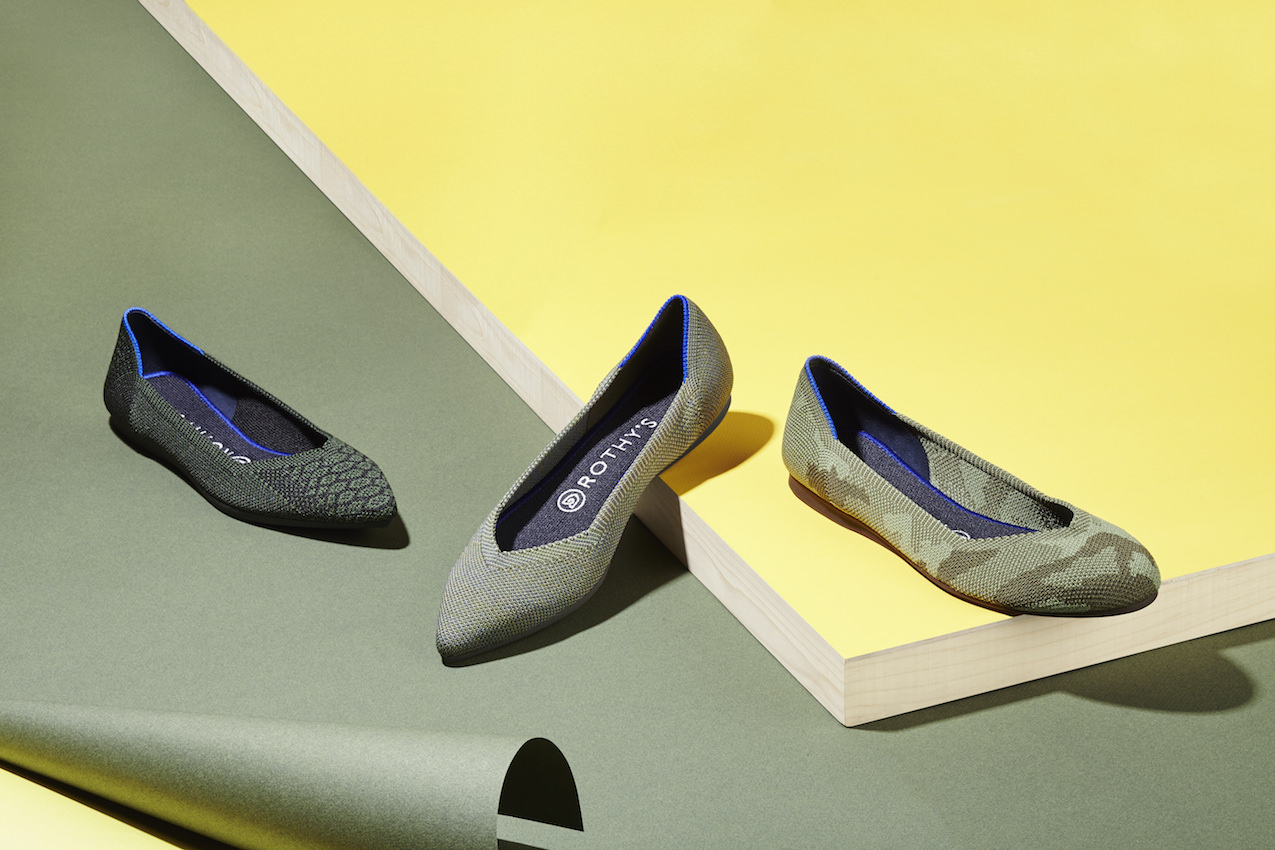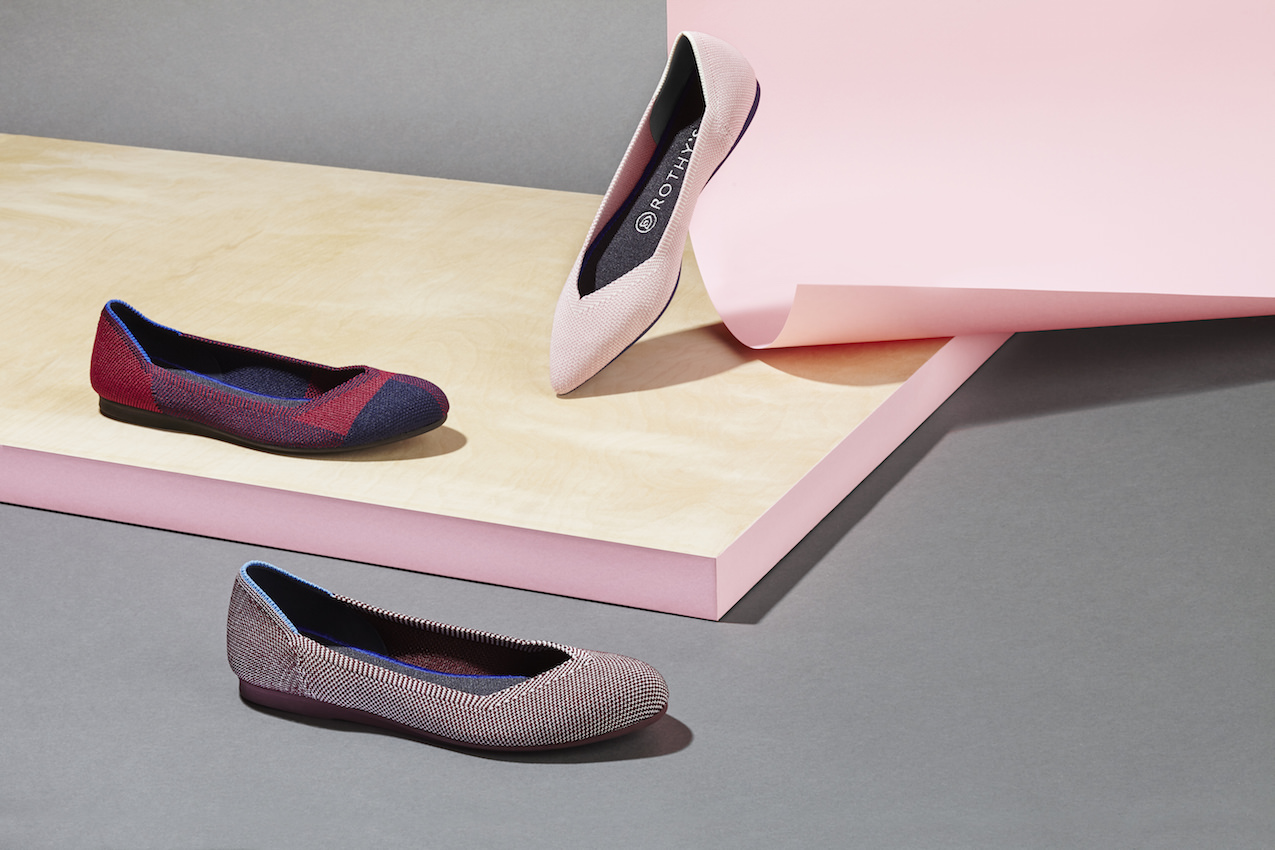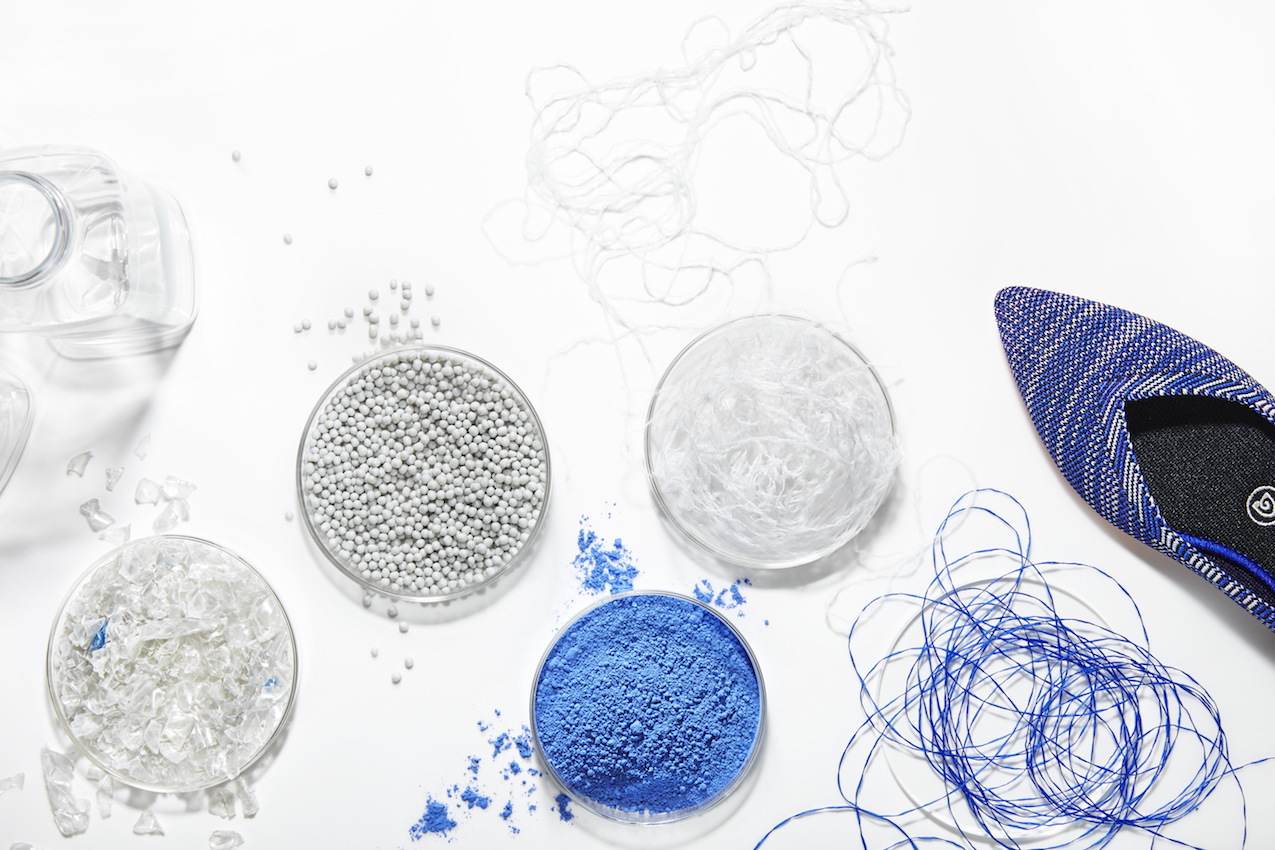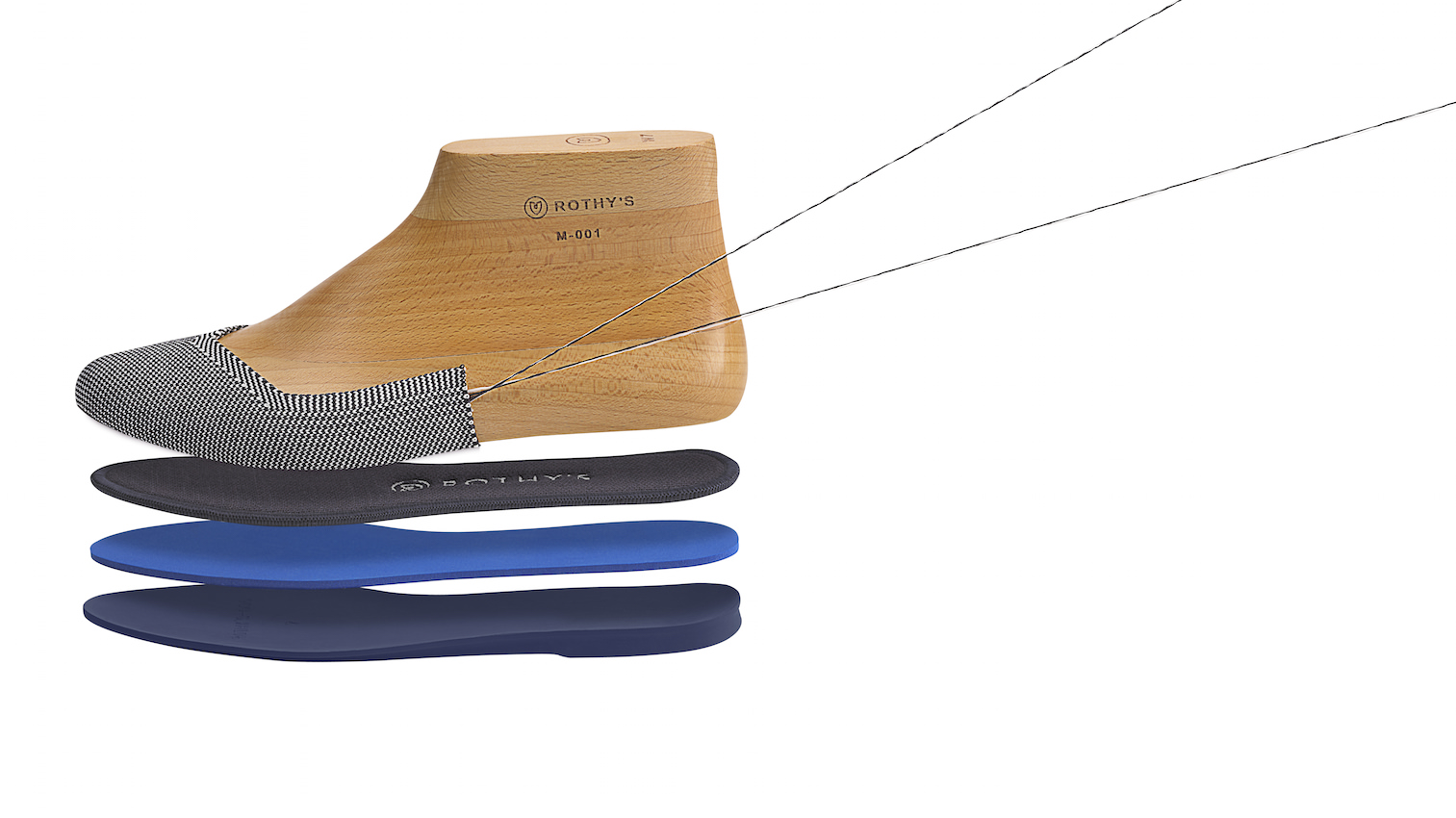The new footwear brand Rothy’s launched this year in San Francisco, created by Roth Martin and Stephen Hawthornthwaite. The machine-washable shoes are not only stylish and comfortable, they are fully recyclable. But most importantly, they have changed the way any shoe has ever been designed or made. Rothy’s flats are the first-ever seamless shoe that uses 3-D knitting from fibers made from 100 percent recycled water bottles to create an upper that is attached to a simple insole, made of just three parts.
Rothy’s shoes are an example of innovative, sustainable, and responsible design being applied to an industry bogged down in fast fashion and material waste. Whitewall spoke with its co-founder, Roth Martin, about his journey from collecting design, to running a gallery, to designing a revolutionary flat.

Courtesy of Rothy’s.
WHITEWALL: Where did your initial interest in design stem from?
ROTH MARTIN: Probably from my mother—she’s an artist. I have a good eye for aesthetics and it came naturally to me. I got exposed to furniture and sculpture and ceramics, and really dug in on that. I loved the discovery process and the hunt for things.

Courtesy of Rothy’s.
Originally, it started with collecting vintage design and furniture. Almost 13 years ago when I started Hedge Gallery, it was in a time when you could buy fantastic things for not a lot of money. We started selling vintage furniture and then got into representing artists, and that’s when things got really exciting for me. I really loved knowing how things were made. I got exposed to a lot of the processes of engineering complicated things and helped some of our artists facilitate getting things made and realizing difficult projects.
WW: How did you go from running a gallery to designing footwear?

Courtesy of Rothy’s.
RM: It got to a point, though, where I was frustrated with the gallery a bit, because it wasn’t terribly scalable. It’s such a rarified world where the pieces are one-offs or limited editions, and it’s just not accessible for a lot of the world. I wanted to do something that channeled a lot of the same simplicity and aesthetics into something that had more of a mass-market appeal.
WW: Why did you want to make sustainability and eco-friendly design at the forefront of that next venture?

Courtesy of Rothy’s.
RM: I’m from San Francisco, so . . .
WW: Right!

Courtesy of Rothy’s.
RM: I mean, it’s so prevalent here and such an important part of most people’s lives in San Francisco that it was easy to make decisions around those parameters as we designed things.
WW: How did you arrive at the choice of footwear and the technique of 3-D printing?
RM: We were seeing a lot of casualization in the Bay Area and elsewhere. I thought there had to be a better way to be comfortable but still be fashionable. There wasn’t one shoe that was fashionable yet comfortable, and engineered with good materials, that was made in a simplistic way. Fashion gets so much attention, but footwear is an incredibly dirty and wasteful industry. The cutting processes alone generate massive amounts of waste.
The proliferation of the fast fashion industry has created more production and waste in the industry, and so I just wanted to take a more sensible approach, even through product offering. We offer very few choices, from a silhouette standpoint, distilling it down to essentials—the Point and the Flat. And then from a manufacturing standpoint, we wanted to really bring in processes and procedures that leveraged technology to take a lot of those inefficiencies and wastefulness out of the equation.
Consumers are coming to expect companies to do good. That’s what we set out to do; we wanted to try to do better than others have in the past.
WW: Can you tell us more about the 3-D knit?
RM: We knit three-dimensionally. In a running shoe you have laces you can adjust. It’s a much more exact process for us to make a women’s flat. We’re the first three-dimensional seamless shoe. And for the consumer, a seamless back means more comfort.
It’s a super-complicated, but it’s simple in form and that was a driving factor in the design process which we think translates well to both style and comfort. We wanted to do something that was stylish, and build shoes that were lasting and had high function.
This article is published in Whitewall’s winter 2017 Luxury Issue.








